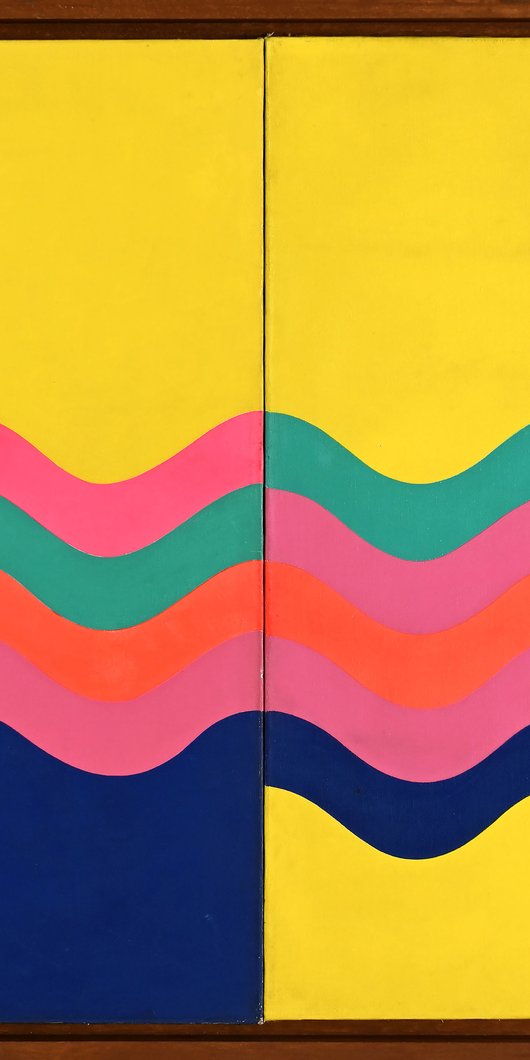Lending artworks internationally is one of the cornerstones of the work at Mathaf: Arab Museum of Modern Art, as it enables the viewing and appreciation of modern and contemporary Arab art abroad. However, a number of risks are involved while artworks are outside Mathaf’s protection, specifically during travel, including damage in transit. Mathaf’s conservation team supports this work.
In this edition of Mathaf’s conservation series, Head of Conservation Dr Stefani Kavda details the labour of love preserving a painting from the museum’s permanent collection.
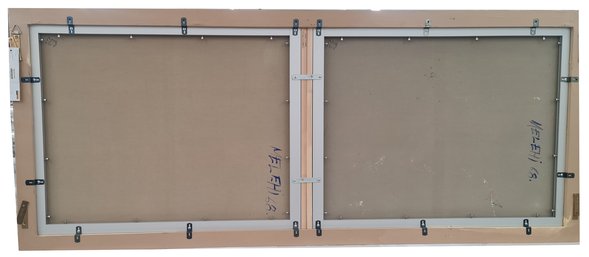
Back view of Composition's two canvases with their wooden secondary supports (strainers).
Mohamed Melehi’s artwork Composition (1969) from Mathaf’s permanent collection* was on view at the 60th Venice Biennale in late 2024, titled Stranieri Ovunque - Foreigners Everywhere. In preparation for travel, Mathaf’s painting conservator checked the artwork in the museum’s conservation laboratory.
A modern acrylic painting typically consists of a canvas fixed on a stretcher or strainer (known as the secondary support) and altogether protected by a frame. However, Composition’s condition check revealed a surprise: it consists of two canvases assembled and framed together. Each of the linen canvases is stretched and stapled on a separate strainer.
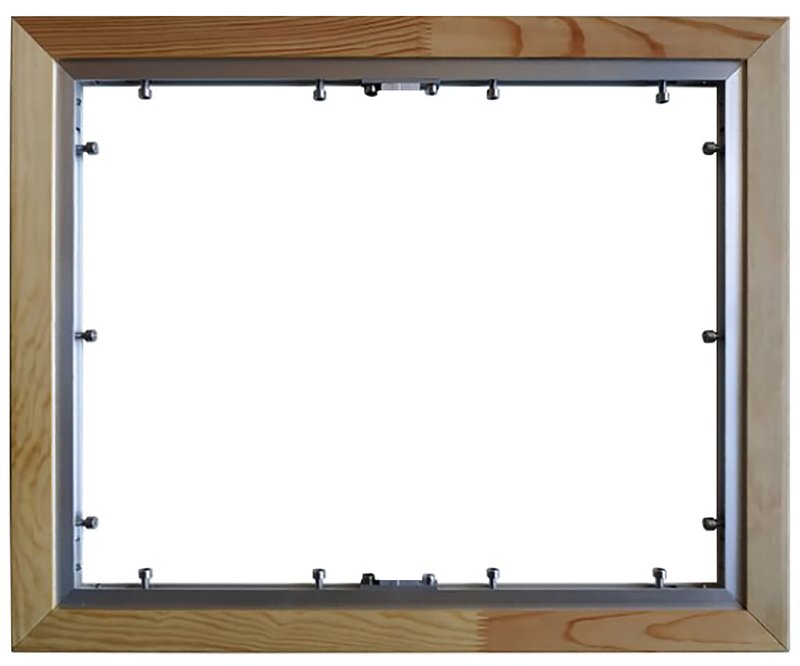
Image of an example of a floating stretcher made of wood fitted around an aluminum frame with screws that can be reversibly tightened or loosened with a tool.
Linen canvases are extremely sensitive to fluctuations in relative humidity which can cause canvas relaxation and lead to damage of the paint layer. That is why canvas tension is very important for paintings. This is also why conservators have found a technique to regulate tension through an invasive and delicate conservation treatment that consists of removing the staples and the painting from its strainer, re-stretching and re-stapling it back on.
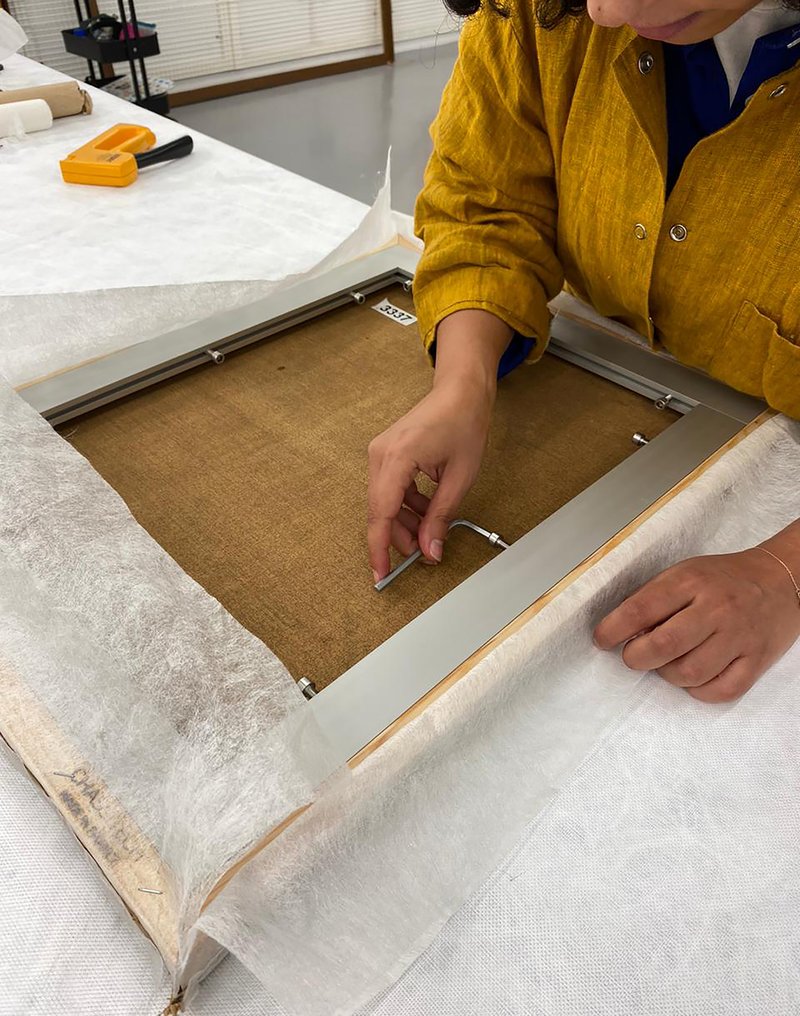
Re-stretching canvas on a new aluminum stretcher in the Mathaf conservation lab.
During the trip from Doha to Venice, the artwork is transferred from the conservation lab (where climate conditions are ideal) to airport customs, on an eight-hour flight to Milan, through customs again, onto a truck for a three-hour ride to the Venice port, where it is loaded on a small open boat that takes it through the Venice canals to the Biennale venue. In other words, the painting is exposed to all elements and circumstances it shouldn’t: extreme weather changes, shock, vibration and water.
Since climate changes could take place anytime during travel and given the fragile condition of the painting, the conservator decided to stabilise it by replacing the strainers with two new, more rigid supports of improved technology: the aluminum and wood floating stretchers. The advantage here is that these new supports can easily be tightened or loosened any number of times, allowing not only the stretching but also the relaxation of the canvas – something that was not previously possible.
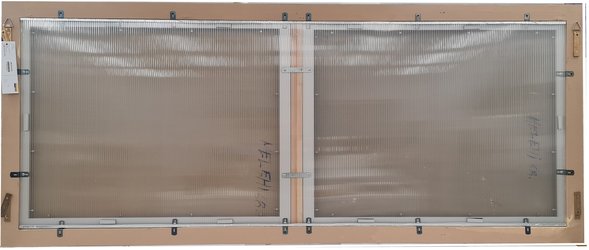
Back of the painting sealed with a polycarbonate backing board that offers protection during transport and handling.
The painting was also dust cleaned with brushes, a museum vacuum, and organic solvents to remove more persistent dirt. Scratches and losses in the paint were retouched with watercolours. Lastly, the painting was lightly sprayed with varnish. The back was sealed with a board for protection from mechanical damage, dust and moisture during transport and handling.
The conservation treatment successfully improved the canvas’ tension ensuring its long-term preservation and offered a reversible solution that allowed tension re-adjustment whenever necessary. More importantly, it rendered Composition structurally more stable for travel and display in Venice.
For more stories from Mathaf, please visit our stories page.
*Please note: All Mathaf’s permanent galleries are currently closed in anticipation of a new presentation this coming spring.
